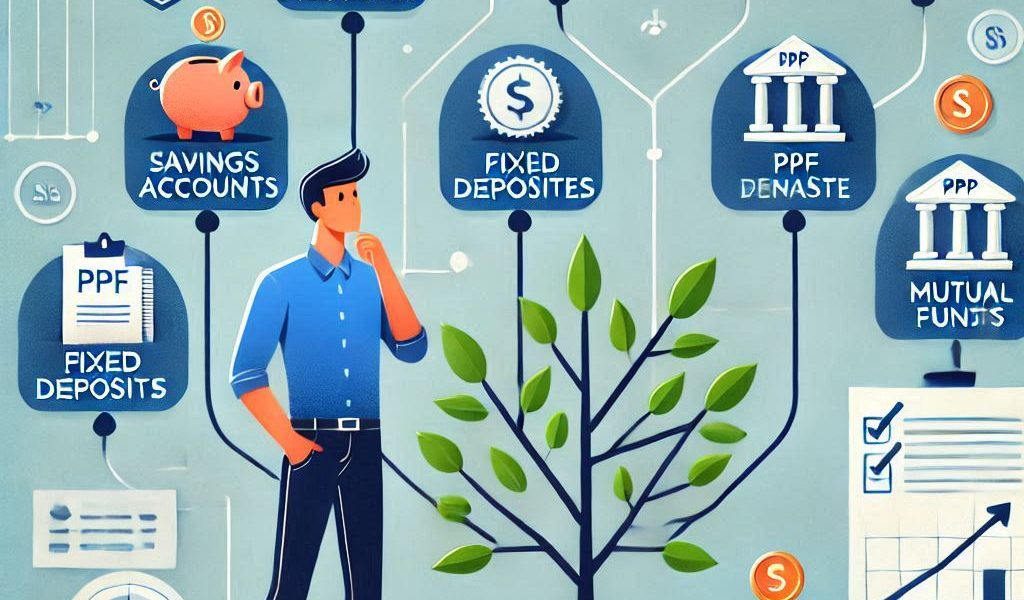Choosing the right saving plan is crucial for securing your financial future. With numerous options available, it can be overwhelming to decide which one aligns best with your needs. This guide will help you identify the key factors to consider and provide insights into popular saving plans, enabling you to make an informed decision.
Why Choosing the Right Saving Plan Matters
- Goal Alignment: Different saving plans cater to various financial goals, such as retirement, education, or emergency funds.
- Risk Management: The right plan balances your risk tolerance with your need for returns.
- Financial Security: A suitable saving plan ensures you’re prepared for future uncertainties.
- Tax Efficiency: Some saving plans offer tax benefits, helping you maximize your savings.
Factors to Consider When Choosing a Saving Plan
- Financial Goals:
- Short-term goals: Emergency fund, vacations, or small purchases.
- Long-term goals: Retirement, education, or buying a house.
- Risk Appetite:
- Low risk: Fixed deposits, PPF, or government-backed schemes.
- Moderate to high risk: Mutual funds, ULIPs, or SIPs.
- Investment Horizon:
- Short-term: Savings accounts, recurring deposits.
- Long-term: PPF, NPS, or equity-linked savings schemes (ELSS).
- Liquidity Needs:
- If you need quick access to your money, choose plans with high liquidity like savings accounts or sweep-in facilities.
- For locked-in investments, consider your ability to commit funds for the required tenure.
- Tax Benefits:
- Look for plans offering tax deductions under Section 80C or other applicable laws, such as PPF, NSC, or EPF.
- Returns and Inflation:
- Ensure the plan offers returns that outpace inflation to preserve the purchasing power of your savings.
Popular Saving Plans to Consider
- Savings Accounts:
- Best For: High liquidity and easy access to funds.
- Key Features: Low returns but highly flexible.
- Fixed Deposits (FD):
- Best For: Guaranteed returns and safety.
- Key Features: Fixed interest rates, low risk.
- Public Provident Fund (PPF):
- Best For: Long-term wealth accumulation.
- Key Features: Tax-free returns, government-backed security.
- Recurring Deposits (RD):
- Best For: Systematic small savings.
- Key Features: Fixed interest, flexible tenures.
- Unit Linked Insurance Plans (ULIPs):
- Best For: Combining savings with insurance.
- Key Features: Market-linked returns, tax benefits.
- National Pension System (NPS):
- Best For: Retirement planning.
- Key Features: Tax benefits, choice of investment options.
- Mutual Funds & SIPs:
- Best For: Wealth creation over the long term.
- Key Features: Market-linked returns, professional management.
Steps to Choose the Right Saving Plan
- Define Your Goals: Start by outlining your short-term and long-term financial objectives.
- Assess Your Financial Situation: Understand your income, expenses, and savings capacity.
- Evaluate Risk Tolerance: Decide how much risk you’re willing to take with your savings.
- Research Plans: Compare different options based on returns, tenure, risk, and tax benefits.
- Seek Professional Advice: Consult a financial advisor if you’re unsure about the best choice.
- Monitor and Adjust: Regularly review your saving plan’s performance and make changes if necessary.
Common Mistakes to Avoid
- Ignoring Inflation: Choose plans with returns that outpace inflation to protect your savings.
- Focusing Solely on Returns: Consider other factors like liquidity, risk, and tax benefits.
- Overlooking Emergencies: Always prioritize building an emergency fund.
- Not Diversifying: Avoid putting all your money in one plan; diversify to balance risk and reward.
Conclusion
Selecting the right saving plan is a critical step in achieving your financial goals. By understanding your needs, assessing available options, and planning wisely, you can ensure financial security and peace of mind. Remember, the best time to start saving is today—take the first step towards your financial freedom!




